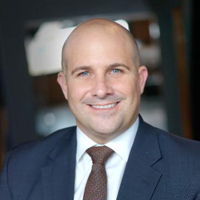Offense or defense? Why a healthcare provider should identify its financial persona as part of a revenue growth strategy
- The COVID-19 pandemic has amplified the gap between offense-oriented and defense-minded hospitals and health systems, according to a presentation at HFMA’s Digital Annual Conference.
- Organizations that think offensively are willing to change their business model for the sake of growth, while those with a defensive approach prefer to focus on ways to optimize their core business.
- Both types of organizations can benefit from seeking partners with complementary personas for growth initiatives.
A hospital or health system should identify its financial persona as an initial step in developing strategies to diversify revenue and improve margin, HFMA Digital Annual Conference attendees heard during a featured general session Friday.
The organization then can seek out like-minded industry partners with complementary personas, setting the stage for success in growth strategies, said Jami Youmans and Kyle Hathaway, managing partners with HealthEco.a
COVID-19 widens the gap between personas
The COVID-19 pandemic exacerbated the financial pressures facing the healthcare industry. Amid the ongoing recovery period, an increasing divergence is seen in the business strategies of health systems based on whether they have adopted an offensive or defensive persona.
“It’s not to say that one mindset is better than the other,” Hathaway said.

Kyle Hathaway, HealthEco
At offensive-minded organizations, “Entrepreneurial leaders seize the opportunity to create meaningful change and begin to transition the business model,” Hathaway said. They likely already were pondering such a move “but decided that this represented the right inflection point to do so.”
Defensive-minded systems typically have thinner margins and prefer to focus on their core business, never more so than in the current environment. “They’re your community hospitals and they’re community leaders, and they’re well-run organizations. They have to be sure that they’re strategic in where they allocate their resources,” Hathaway said.
“These leaders are going to very quickly acknowledge their financial persona and choose growth through collaboration. And they’re going to align their organization and their resources to heavily preserve the core-oriented tasks around the health system, but then partner to pursue those growth initiatives.”
Four types of personas
Beyond descriptions as offensive or defensive, Youmans said, hospital and health system personas can be grouped into four categories based on the level of risk and capital they are willing to commit and the amount of organizational resources they are willing to devote.

Jami Youmans, HealthEco
Buyer: Seeks to buy innovations that solve strategic needs for the health system. This category is the most defense-minded.
Investor: Seeks to invest and generate returns through equity in early-stage companies accretive to the health system’s mission, regardless of utilization.
Creator: Seeks to create innovations from within to generate returns, engage staff and monetize core competencies.
Change agent: Seeks to lead alternative revenue creation systemwide and in the community through acquisition, investment and business creation. This is the most offense-minded category and was exemplified recently by the Intermountain-led launch of Civica Rx, the not-for-profit pharmaceutical distribution company.
Pathways to success in growth strategies
An organization should start by assessing its financial persona and then considering opportunities to participate in peer collaboration networks with complementary personas that can enhance the organization’s core competencies, Hathaway said.
“An investor goes well with a buyer,” he said. “Investors and buyers go well with change agents. Creators need buyers and investors because they need to launch platforms. There’s a very natural, noncompetitive interchange that exists today through the different financial personas.”
Such partnerships allow for collaborations on business ventures in noncompetitive relationships. Advantages include:
- Access to expertise, resources and technologies that can be built at scale
- Opportunities to benefit from improvements provided by a partner at no incremental cost
- Risk mitigation through syndication
Organizations should seek to collaborate with “like-minded partners, synergistic personas, to maximize collective strengths and opportunities,” Youmans said.
Measuring the success of growth strategies
HealthEco has developed the metric equivalent net patient revenue (eNPR) to gauge the outcomes of hospital and health system growth initiatives.
It’s defined as “the equivalent acute care billing that would be required to reproduce a margin gain from alternative revenue strategies” and is calculated by dividing total margin by operating margin.
For example, if a health system has an operating margin of 2.2% and generates $5.5 million in EBIDTA through an alternative revenue strategy, the eNPR is $5.5 million/2.2% = $250 million of NPR that would be required to produce the same margin gain through core services.
“In a lot of instances, we’re starting to see the markets consolidate, and you can’t get there,” Hathaway said, referring to equivalent growth through traditional strategies.
“These strategies now need to look at not just what their margin gain is going to be and what they’re going to generate as far as an equation against cost of capital, but they also need to look at what the equivalent net patient revenue is that they can generate.”
For example, Children’s Hospital of Philadelphia netted a $450 million margin gain from the sale of its spinoff Spark Therapeutics, a gene therapy company. Yet when viewed against the system’s margin at the time, the transaction generated $3.6 billion in eNPR.
“That’s a staggering number and one they would not have been able to recreate for themselves through a growth-through-acquisition strategy or probably even service line expansion or any other traditional growth strategy,” Hathaway said.
Footnote
a. HFMA and HealthEco recently announced a partnership to help health systems diversify revenue streams and boost margins.





